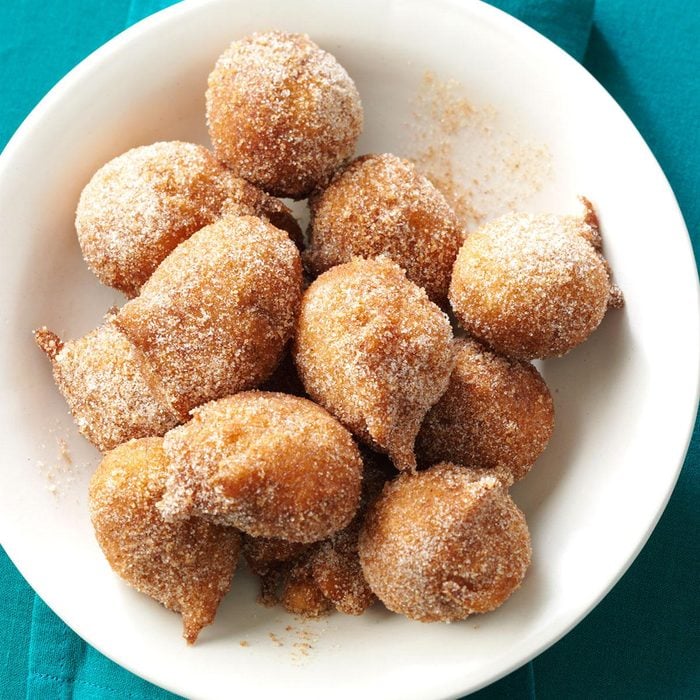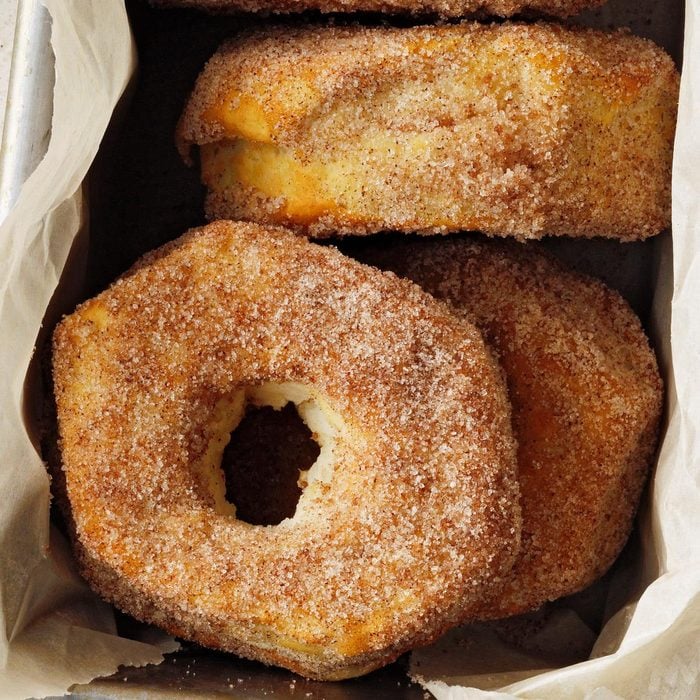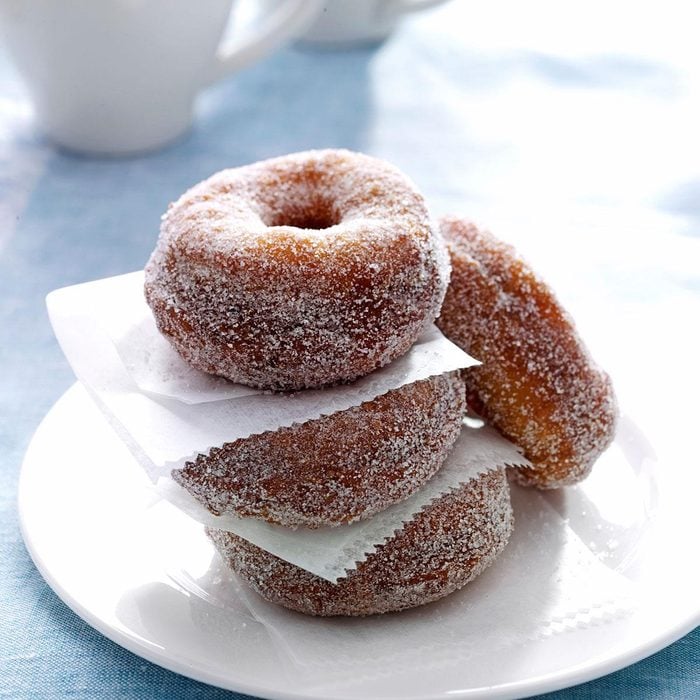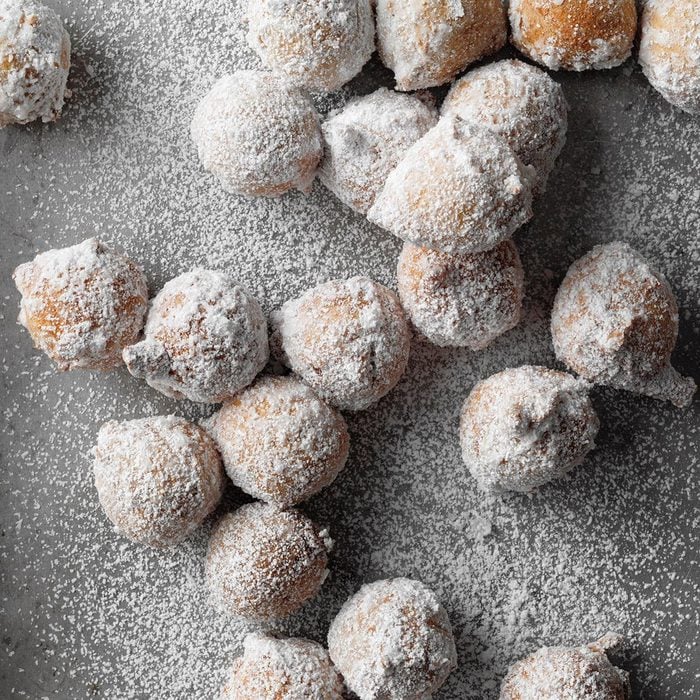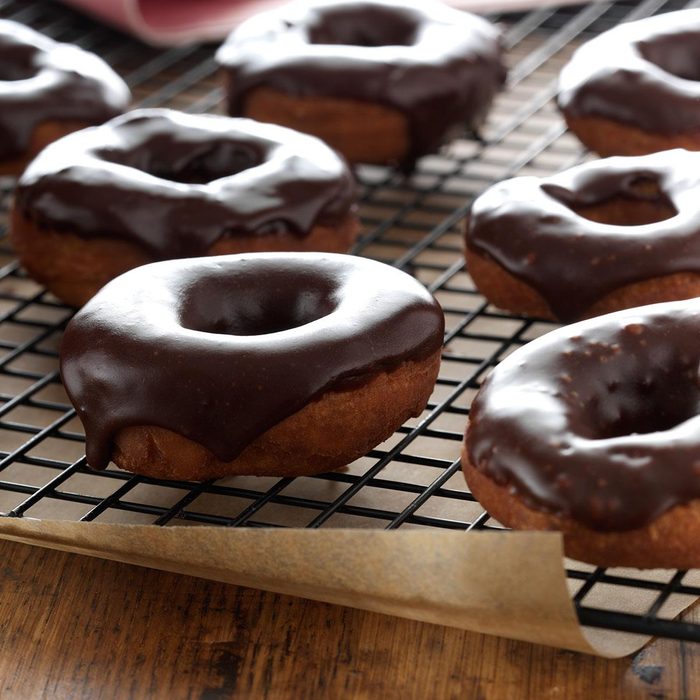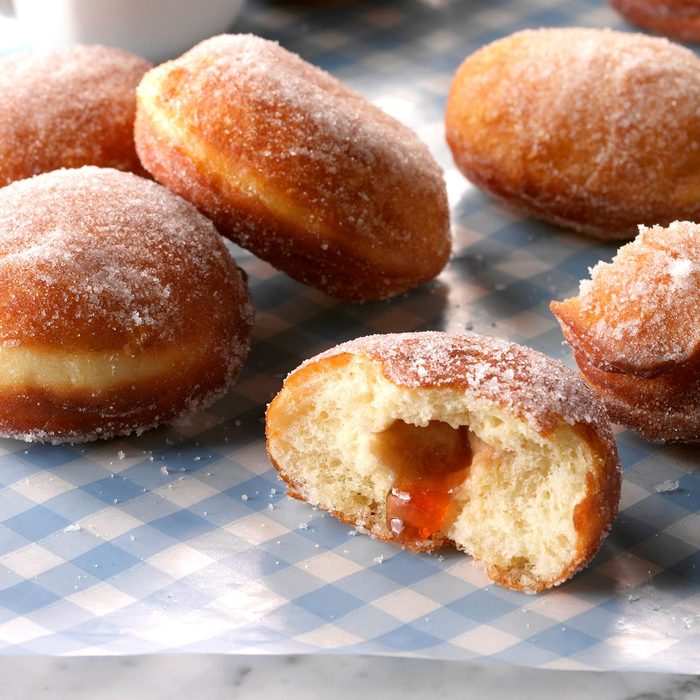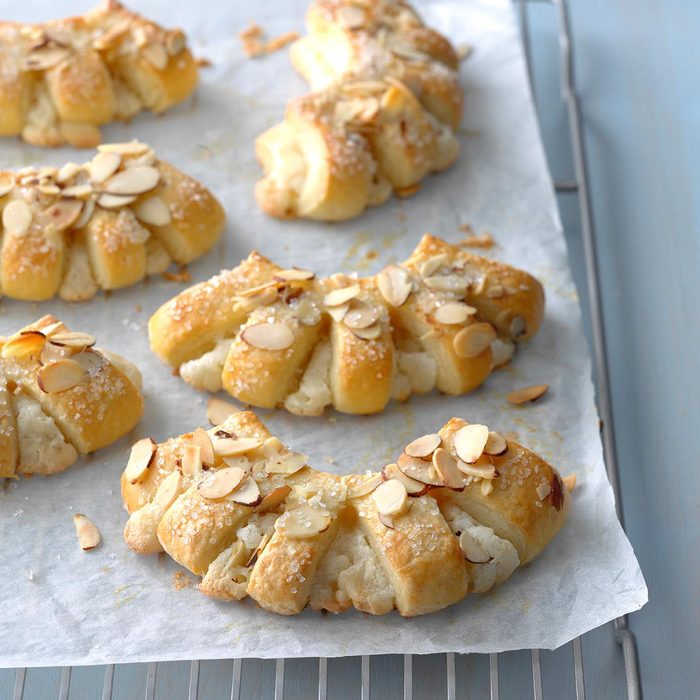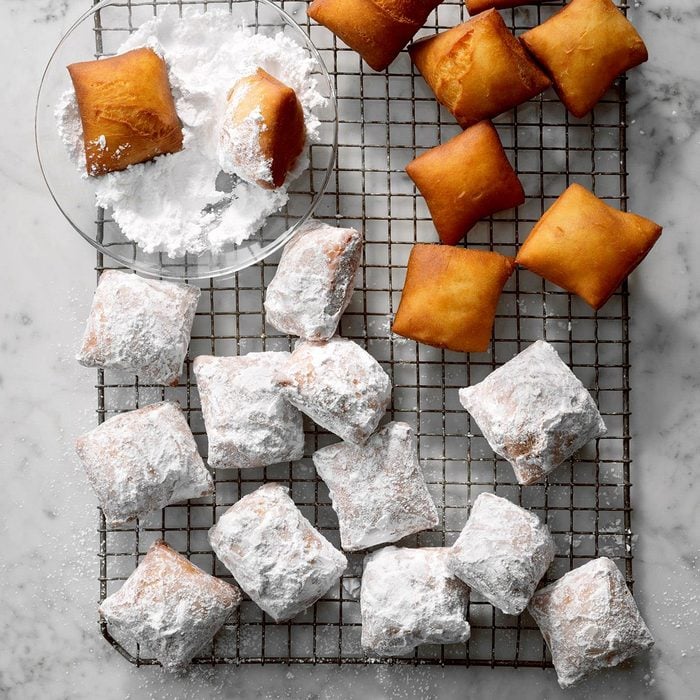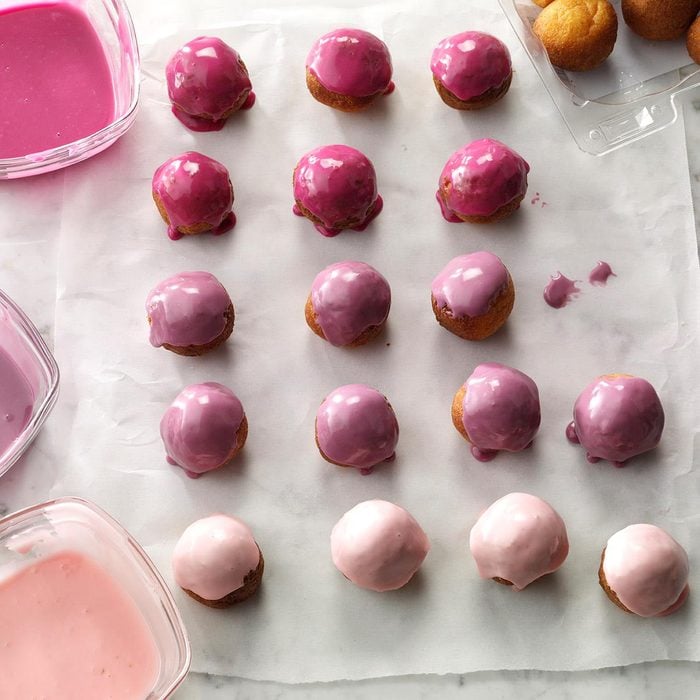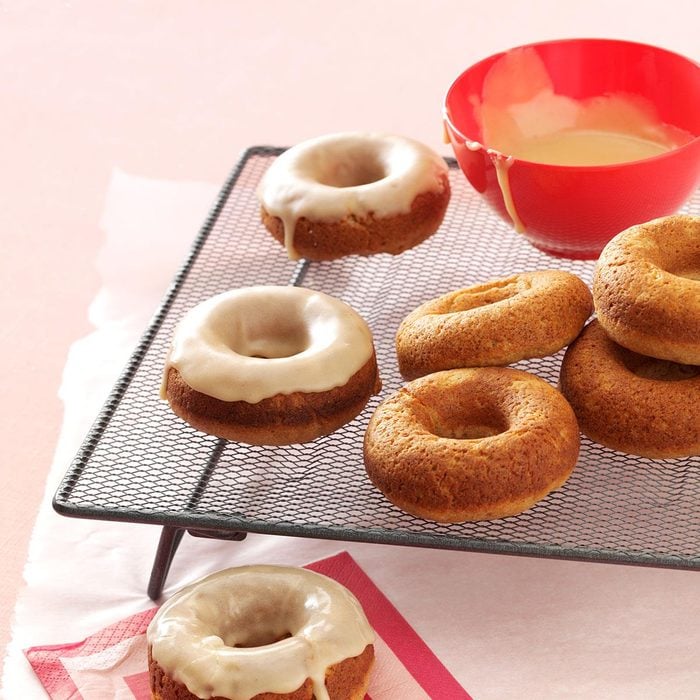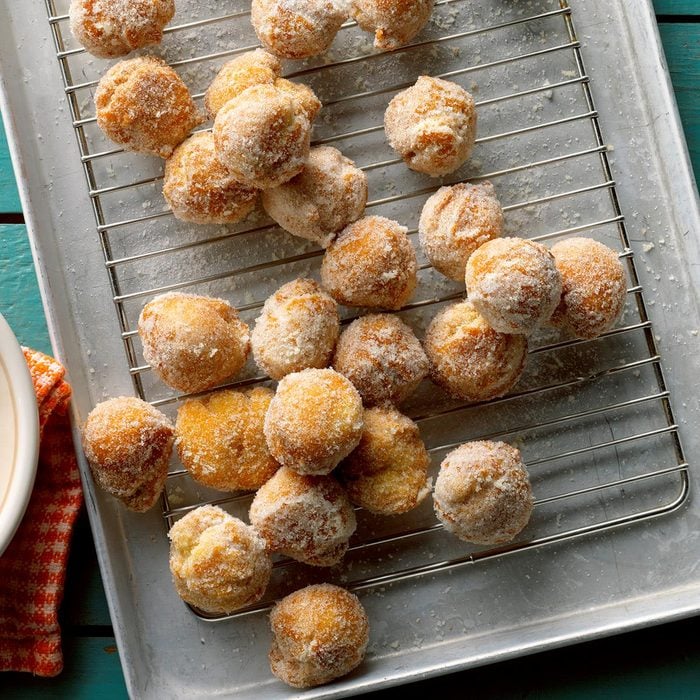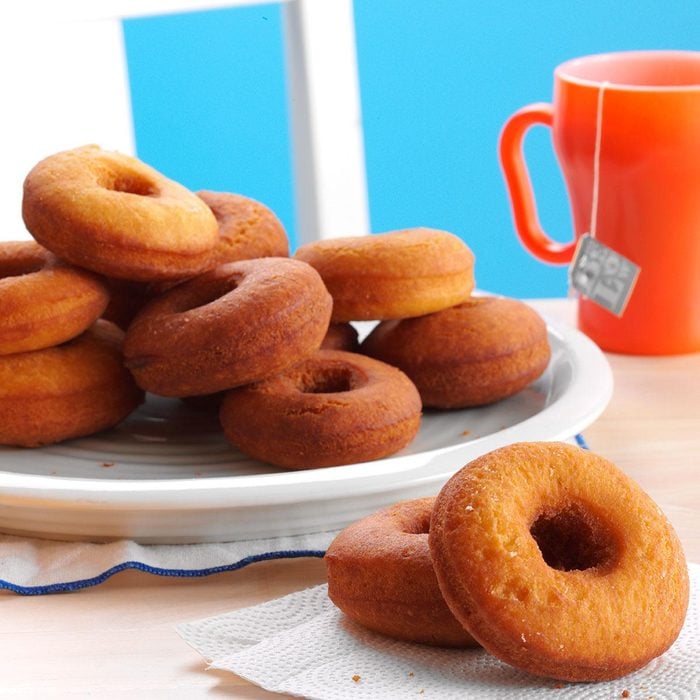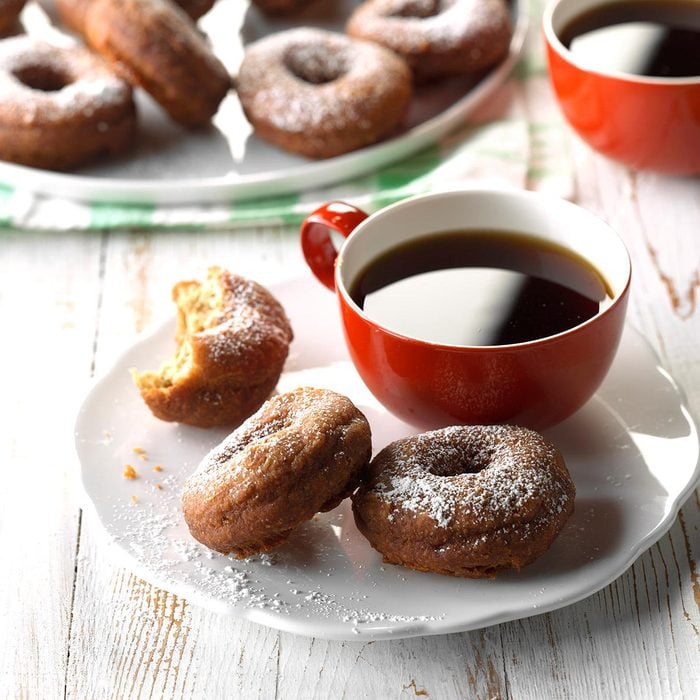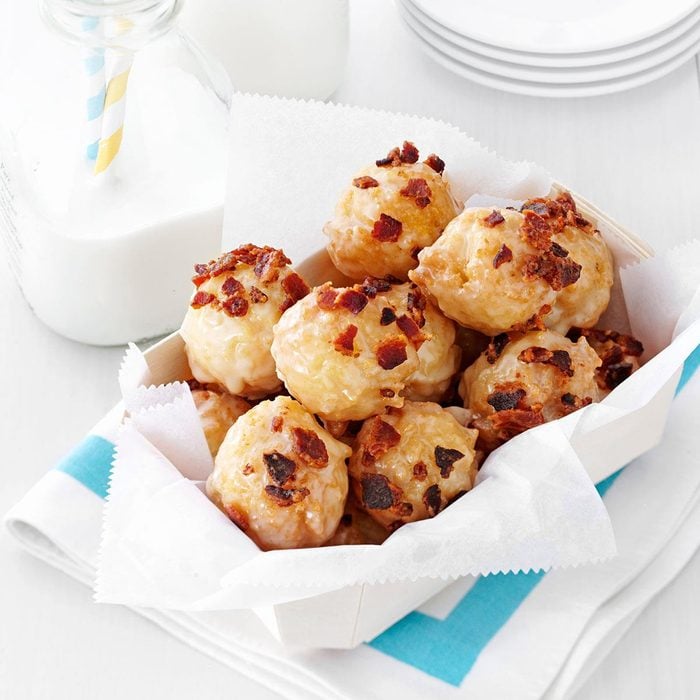Whether you’re hosting a Sunday brunch or bringing a sweet treat into the office to share( like simple homemade sugar doughnuts), doughnuts reign supreme. But not all doughnuts are one and the same! Yes, of course, they can have different toppings or fillings, but the differences begin with their structure.
Most people are either cake doughnut fans or yeast doughnut fans. Here are the key differences that make these two doughnuts unique.
History of Doughnuts
While both yeast doughnuts and cake doughnuts have a storied past, it was yeast doughnuts that came to the table first. Cake doughnuts are made with baking powder, a chemical leavening agent which is not found naturally. Yeast, however, has been accessible for centuries.
Once baking powder became available, cake doughnuts became more popular. Women of the Salvation Army served doughnuts to soldiers during World War I to offer them a treat that reminded them of home. The popularity of doughnuts skyrocketed as new technology to make them became available in the 1920s and 1930s. Not long after that, the popular doughnut chain Krispy Kreme opened in 1937, and Dunkin’ opened its doors in 1955. Learn how to make old-fashioned donuts at home.
The Difference Between Cake and Yeast Doughnuts
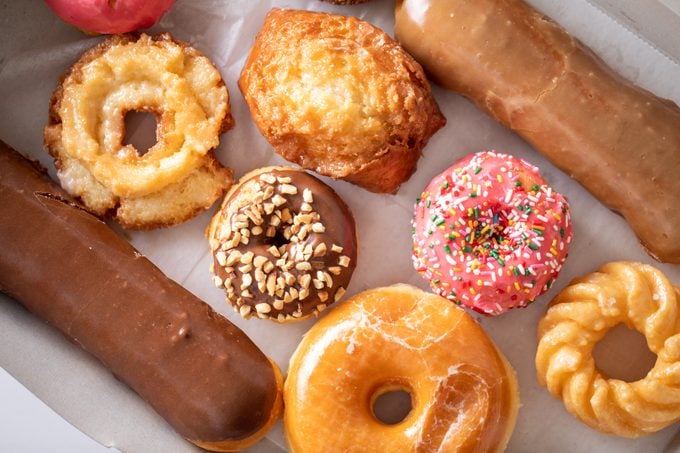 Garrett Aitken/Getty Images
Garrett Aitken/Getty Images
While cake doughnuts and yeast doughnuts are both delicious, they are made with different ingredients and unique methods. It’s helpful to understand how to make doughnuts to know just what makes them different.
Yeast Doughnuts
For yeast doughnuts, it’s all in the name—the key ingredient is yeast. The texture of yeast doughnuts is lighter and fluffier. And that’s all due to the yeast-risen dough. Flour gives strength to the dough, sugar adds a touch of sweetness and eggs, milk and melted butter give the doughnuts structure, moisture and flavor.
After the dough has risen and is cut, yeast doughnuts are proofed again before being fried in oil, resulting in a smooth, pillowy treat. Then, they’re topped with a glaze or icing and dressed up with sprinkles. Yeast doughnuts can also be left without a hole cut in the middle to be stuffed with cream filling or to make jelly doughnuts. The flavor of yeast doughnuts on their own is subtle, but the toppings and fillings take them to the next level.
Also, try this gluten-free doughnut recipe to recreate crispy, light doughnuts at home.
Cake Doughnuts
While yeast is the leavening agent in yeast doughnuts, cake doughnuts rely on baking powder. Cake doughnuts are typically made with a mixture of butter, sugar, eggs, flour and baking powder. The ingredients are combined to form a thick batter-like dough, which is chilled for two hours before being kneaded, rolled out and cut into circles. The dough is then fried and the doughnuts are either glazed, iced or rolled in powdered sugar or fine granulated sugar. Depending on the recipe, cake doughnuts can also be baked and are typically the best option if you need a gluten-free doughnut recipe.
The texture of cake doughnuts is different from yeast doughnuts because of the method. They have a crisp golden outside, with a soft, chewy interior crumb. The versatility for flavor is generally greater with this type of doughnut because you can add other ingredients such as cider for apple cider doughnuts, cocoa for chocolate cake doughnuts or even blueberries for a blueberry doughnut.
Our Best Doughnut Recipes
Apple Cider DoughnutsA batch of these apple cider doughnuts will have you feeling like it's peak fall season, no matter the time of year.
If you’re craving strawberry doughnuts, here is your guide to make some!
Banana Beignet BitesWhen I was a little girl, my grandmother took me aside one day and taught me how to make her famous banana beignets. Although we made them during the holidays, they're pretty fantastic any time of the year. —Amy Downing, South Riding, Virginia
Air-Fryer DoughnutsMy sons and I love doughnuts, but in the Florida heat, I rarely want to deep-fry them. I tried making this easy air-fryer doughnut recipe, and it turned out so well with no mess! —Christine Hair, Odessa, Florida
There's no better pastry to pair with coffee. Find the
best types of doughnuts to make for breakfast or brunch.
Swedish DoughnutsOne day, my father got a hankering for doughnuts and asked me to make him some. I ended up trying these. Dad—and everyone else—loved the results. They come out so golden and plump. —Lisa Bates, Dunham, Quebec
Drop DoughnutsRemember this recipe after your next holiday dinner. I use any leftover mashed potatoes to make these light and fluffy doughnuts. The dish was originally created by my neighbor's mother-in-law as a breakfast treat or a snack. —Marilyn Kleinfall, Elk Grove Village, Illinois
Berry-Filled DoughnutsFour ingredients are all you'll need for this sure-bet breakfast treat. Friends and family will never guess that refrigerated buttermilk biscuits are the base for these golden, jelly-filled doughnuts. —Ginny Watson, Broken Arrow, Oklahoma
Delicious Potato DoughnutsI first tried these tasty treats at my sister's house and thought they were the best I'd ever had. They're easy to make, and the fudge frosting tops them off well. When I make them for friends, the recipe is always requested. —Pat Davis, Beulah, Michigan
Glazed DoughnutsThe light coffee flavor in these tasty sugar-glazed doughnuts makes them a perfect start to the morning...on Christmas Day or any day. You'll find that the recipe is a delectable way to use up leftover potatoes. —Pat Siebenaler, Random Lake, Wisconsin
Want an easy fast-food doughnut option for Christmas day? Krispy Kreme Christmas doughnuts are a delicious go-to.
Jelly DoughnutsThere's no need to run to the bakery for delicious jelly doughnuts! These sweet treats are lighter than air. I've been fixing them for 25 years for my husband, our two daughters and their families. They disappear almost as fast as I make them. —Kathy Westendorf, Westgate, Iowa
If you want to make restaurant-style doughnuts, here's our favorite copycat
Krispy Kreme doughnut recipe.
Almond Bear ClawsThis bear claw pastry recipe is absolutely melt-in-your-mouth delicious! It's impossible to resist the delicate dough, rich almond filling and pretty fanned tops sprinkled with sugar and almonds. I made yummy treats like this when I worked in a bakery years ago. —Aneta Kish, La Crosse, Wisconsin
BeignetsThe Big Easy is known for its fresh, doughy beignets. Here is our recipe for making these iconic doughnuts at home.
Looking for a fancy breakfast pastry? Learn how to make delicate, swirled
French cruller doughnuts at home.
Glazed Doughnut HolesHere's a simple recipe to create a colorful and fun breakfast—or snack! For the glaze, use any type of juice you like. —Taste of Home Test Kitchen. Next, learn how to make a
chocolate glaze for doughnuts.
Gluten-Free Apple Cider DoughnutsI wanted to make a gluten-free apple cider doughnut that tasted so good, the fact that it’s gluten-free is beside the point! —Kathryn Conrad, Milwaukee, Wisconsin
Pumpkin Doughnut DropsI always have a few special treats handy when the grandchildren visit. These cake doughnuts are one of their favorite snacks. —Beva Staum, Muscoda, Wisconsin
Blue-Ribbon DoughnutsWhat could be more delicious than a warm homemade doughnut? I've been making these tasty treats for my children and grandchildren for many years. —Kay McEwen, Sussex, New Brunswick
Cider DoughnutsHere on our 1,250-acre farm, we usually have a quick breakfast on the go. So I often keep a batch of these light and moist doughnuts on hand. They disappear quickly because no one can eat just one! —Suzanne Christensen, Defiance, Iowa
Maple-Bacon Doughnut BitesWhile these delicious bite-size treats are ready in minutes, they’ll disappear in a flash. And don’t relegate the deep-fried goodness to the breakfast nook—I’ve never had anyone turn these down no matter the time of day. —Chelsea Turner, Lake Elsinore, CA
























